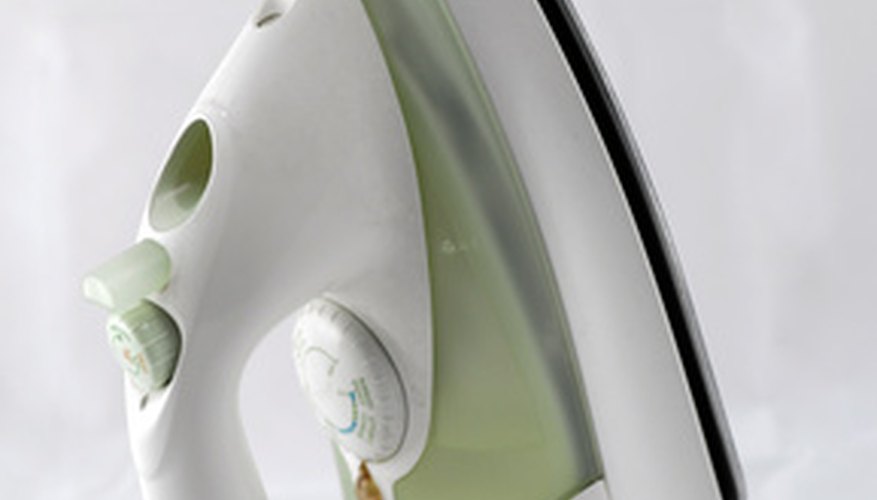Steam irons add the advantage of steam to a traditional iron.
With proper care, a steam iron can perform well for many years. With a variety of prices and features available, steam irons can fit most households. Whether sewing new garments or preparing laundered ones for wearing, a steam iron is a valuable tool.
Function
As the iron heats up, water in the internal reservoir heats as well. Once the water reaches an appropriate temperature, steam discharges through vents on the sole plate and possibly an “on demand” steam spray port.
Benefits
Moist heat created by the steam iron aids in smoothing wrinkles without stretching the fabric.
- Moist heat created by the steam iron aids in smoothing wrinkles without stretching the fabric.
Crisper pleats result from the steam. Clothes need not be dampened prior to ironing with a steam iron. The steam moistens without leaving water spots.
Mineral Buildup
The life expectancy of a steam iron often depends on the water used in it. Hard water contains many minerals which deposit in the reservoir and lines and on the vents. These deposits eventually block the discharge of steam from the iron or cause dripping rather than steaming.
Prevention/Solution
To minimise mineral build-up, use filtered or distilled water in the iron.
Empty the reservoir when the current ironing is done to reduce sediment as water evaporates. Dry the sole plate before storing the cooled iron.
To clear an existing build-up, use a commercial product for calcium and lime removal. Follow the product directions for best results.
As a green alternative, fill the reservoir with a mixture of equal parts white vinegar and distilled water. Discharge the steam into a sink or other safe receptacle until about half of the liquid is used. Turn off the iron. Let the remainder of the liquid sit in the reservoir for an hour or so. Turn the iron back on and allow the rest of the liquid to exit as steam. The acid in vinegar dissolves the mineral deposits. Refill the reservoir with distilled water and run it through as steam to clean all traces of vinegar out of the iron.
- To minimise mineral build-up, use filtered or distilled water in the iron.
- Discharge the steam into a sink or other safe receptacle until about half of the liquid is used.
Spotting
An overfilled steam iron may leak a stream of water from the steam ports when the iron is positioned for use. Drops of water on the garment cause water spots.
Avoid leaks by watching the water level gauge as water is added. Stop before reaching the maximum recommended level.
- An overfilled steam iron may leak a stream of water from the steam ports when the iron is positioned for use.
- Avoid leaks by watching the water level gauge as water is added.
Types
A steam iron may offer one or more of several features.
Older models or basic new models offer steam only within a certain temperature range. At lower temperatures, no steam is available.
When the steam option is on, steam comes out of the holes on the sole plate. If an on-demand option is available, it may shoot from the front of the iron rather than the sole plate.
- A steam iron may offer one or more of several features.
- If an on-demand option is available, it may shoot from the front of the iron rather than the sole plate.
Newer upgraded models offer steam at all temperatures, allowing users to select the proper temperature for the fabric and still get steam. The on-demand button may send a stronger burst of steam through the sole plate.
